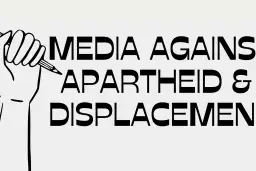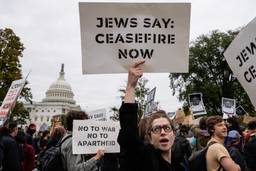
In August, I attended the first-ever “News and Terrorism: Communicating in a Crisis” conference, the Chicago kick-off of a year of counterterrorism workshops geared toward journalists in 10 major cities, sponsored by the Department of Homeland Security (DHS). The keynote speaker was none other than the DHS head honcho himself, Mr. Tom Ridge.
As we settled into our seats, the late-arriving Ridge laid forth our mission: “We’re going to work together to achieve some common goals,” Ridge informed us. “There may be a time when your audience needs more than just the story.”
Journalists, according to Ridge, are the “constant reminders of the freedom of expression we all enjoy.” Nonetheless, when it comes to terrorism, everyone could use a few tips from the good old DHS. The goal of the day, Ridge said, would be to provide the press with a “detailed playbook” for responding to crisis, providing journalists with the strategies and (government-affiliated) contacts needed to deal with a terrorist scenario. “A consistent message to the public is critical.”
It’s a difficult task, freely expressing the “consistent message” you’ve been fed by the feds. We needed instruction. Thus, along with a hundred other Chicago-area journalists, government officials and public health officers, I underwent two hours of interactive crisis response role-playing, following the minute-by-minute details of a make-believe terrorist scenario involving mass casualties, radiation, George W. Bush’s daughter and the wife of one of the reporters. City officials granted the unnamed Bush daughter privileged status, carting her out of the danger zone, despite the quarantine in effect. The reporter’s wife, who’d called his cell phone while he was “on-scene,” was left to bleed in the street. Nervous laughter ensued, but in times like this, the journalists agreed, one must think in terms of the “public good.” Conspicuously absent from the scenario, however, was any mention of the numbers of people dying. The actual toll on human life was left to the ambiguous description, “mass casualty event.”
Throughout the role play, journalists were encouraged to call on experts, to think critically about when to release information to the public, and to ask who, what, when, where-everything but why. The role of the press, said moderator John McWethy of ABC News, is to accurately report information as government officials release it. In other words, in a state of emergency, the media morph into a PR department for Washington. Each speaker emphasized that business, government and the media all must learn how to function in crisis mode. And in crisis mode, baby, we’re all in the system together.
Take, for instance, Ridge’s assessment of the DHS’s color-coded terror alert plan: “It’s a signal, like a traffic light is a signal, that we expect a certain conduct from you.” Apparently, such conduct includes leaving one’s wife bleeding in the street because the news must go on, and remaining in quarantined areas even under the threat of radiation-unless your papa’s the president, that is.
Although a few journalists asked for procedural clarifications (“What’s the protocol for a pregnant reporter covering a radiation crisis?”), real questions were markedly absent from the conference. Does the press have a responsibility to seek out the roots of terror, or to weigh the various complex factors involved in international terrorist scenarios? Nope, according to Ridge. “Our job is to eliminate confusion,” he said. Goodbye, gray zone. Hello, unthinking certainty.
The “coming together in time of crisis” mentality need not apply only to the press. Next April, Connecticut and New Jersey will witness the DHS’s TopOff 3 campaign, the largest-yet terrorist-attack simulation. Governmental organizations and businesses will be called upon to respond to a series of simulated WMD incidents described by the DHS as “round-the-clock exercise play.” Similar events took place in Chicago and Seattle last year, during TopOff 2. The DHS asserts that the simulations will help the nation “prevent, respond to, and recover from terrorist attacks in accordance with DHS protocols.” Yet no one at the News and Terrorism conference was able to articulate what, exactly, it meant to be prepared for a terrorist attack, other than complying with governmental mandate.
The elusive goal of “preparedness” is hardly limited to those in the public eye. Did you know September is now “National Preparedness Month”? To celebrate, the DHS is about to kick off its “Ready for Kids” program, a campaign of TV ads, school programs and events in cities across the country, designed to alert your tykes to the terrorist threat. It’s even got a mascot-an “American Shepherd,” a fictitious breed of dog that nonetheless urges kids to nag their families into developing emergency plans to meet the terror challenge. (Stay tuned: A mascot-naming contest is currently under way.)
However, as in the case of TopOff 3, the specific goals of September’s multimillion dollar program remain hazy. When I asked Ridge to clarify the month’s kid-directed activities, he assured me that the games would be “interesting” and “creative,” then hurried on to discuss the DHS’s Ready for Business blitz in equally vague terms.
So what did I get out of the News and Terrorism day besides a few soundbytes and seven different flavors of bite-size, tax payer-subsidized muffins? A renewed sense of the way that the power of words can be used to distort. When “cooperation” means “blind compliance” and “freedom of expression” means the freedom to express DHS press releases, it seems incredible that, in a room full of journalists, not one raised a question about first amendment rights.
“Our culture within the DHS needs to be a culture of disclosure,” Ridge said, in closing. Perhaps the American media should take a hint from Tommy on this one: No matter the terror alert level, journalists have a responsibility to disclose the truth, regardless of whether they’ve got a fed-signed permit to do so.








